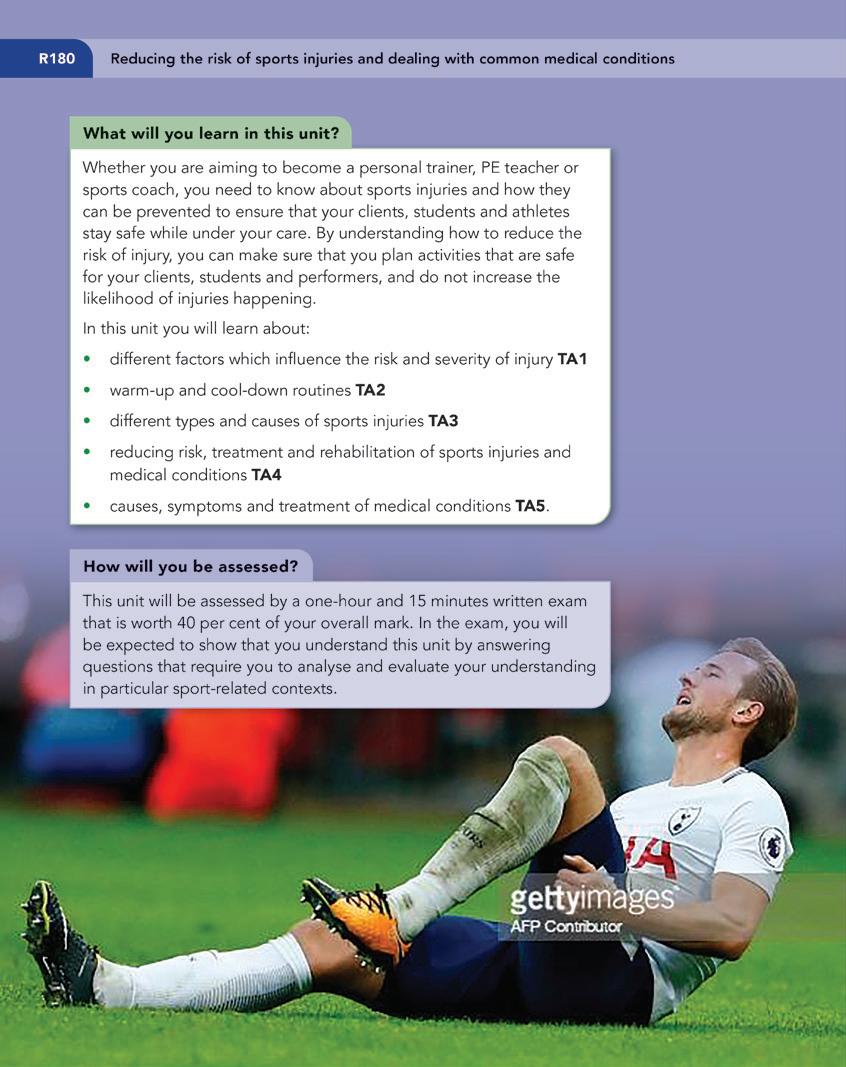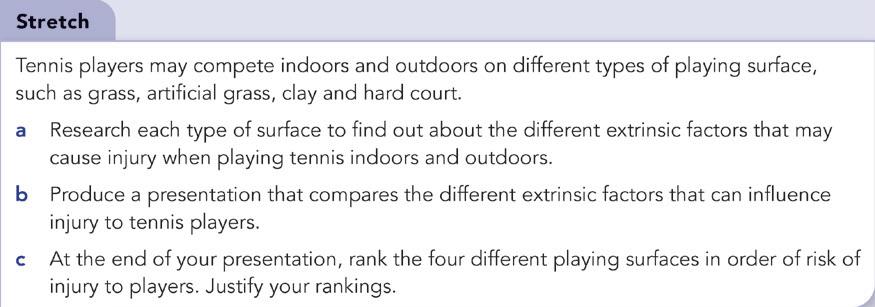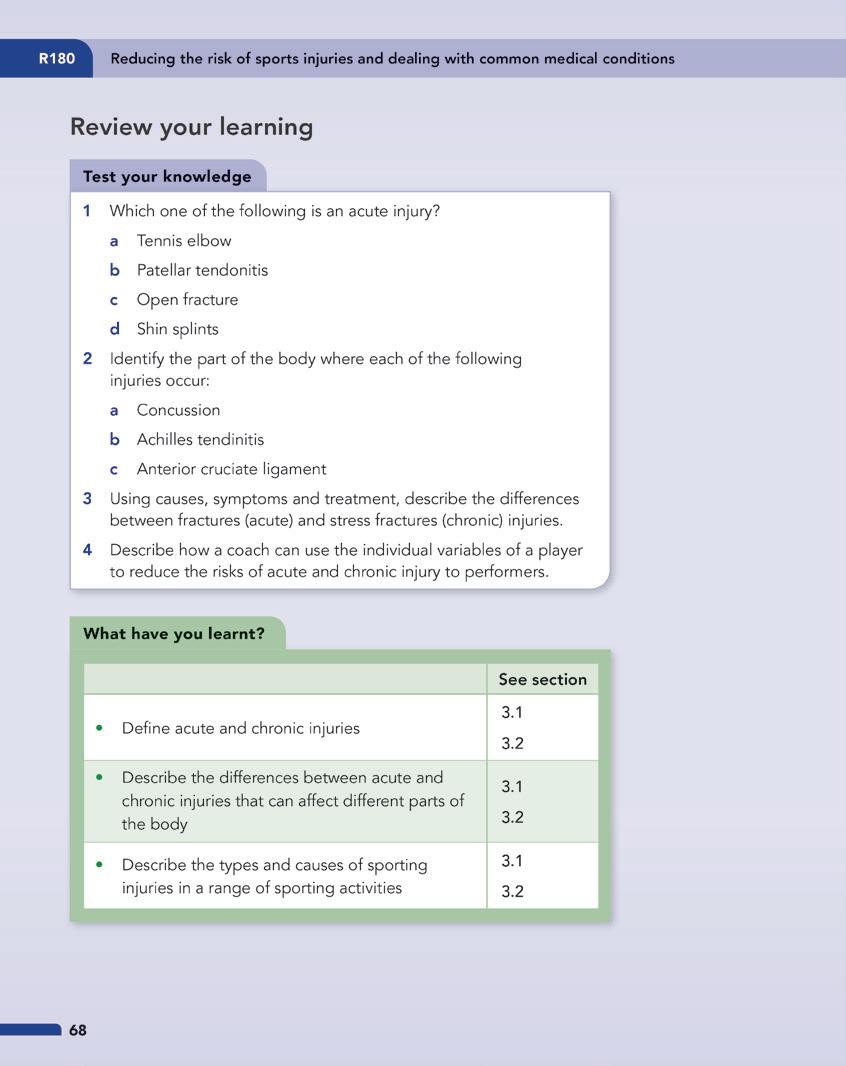
3 minute read
Introduction
About your Sport Science Cambridge National course and qualification
The world of sports is fast-moving and varied: it includes careers directly related to exercise and physical activity, but also the health sector. You might want to work as a sport performer or a leader, as a physiotherapist or a sports nutritionist, or developing new assistive technologies for sports. Whatever you choose, you will benefit from understanding how to reduce the risk of sports injuries, applying the principles of training, understanding good nutrition and how technology can be used to measure responses to physical activity. During your course, you will also develop skills in research, leadership, planning and evaluating programmes, creating presentations and reports, as well as learning important information about leading a healthy lifestyle. How will you be assessed? You have to complete three units – two mandatory units and one optional unit from a choice of two. Mandatory units: • R180 Reducing the risk of sports injuries and dealing with common medical conditions. You will take a written exam for this unit. The exam lasts for 1 hour 15 minutes, and is worth 70 marks. The exam is set and marked by OCR. • R181 Applying the principles of training: fitness and how it affects skill performance. You will be given an assignment to complete for this unit, which is worth 60 marks. This set assignment contains three to five practical tasks. Optional units:DRAFT • R182 The body’s response to physical activity and how technology informs this. You will be given an assignment to complete for this unit, which is worth 60 marks. This set assignment contains three to five practical tasks. • R183 Nutrition and sports performance. You will be given an assignment to complete for this unit, which is worth 60 marks.
This set assignment contains three to five practical tasks.
How to use this book
Throughout this book, you will notice lots of different features that will help your learning. These are explained below.


Thought-provoking questions at the start of units and topics will get you thinking about the subject. These features at the start of each unit give you guidance on the learning outcomes and how you will be assessed.DRAFT This section gives you information about what content is covered in the topic. Case studies based on real people and situations put key concepts and practices into context. The accompanying questions check your understanding and challenge you to take your learning further.





Practical activities that you can do on your own give you the opportunity to practise important skills and techniques, and to prepare for your assessments. Over to you! activities let you apply Key words are highlighted in the text and explained fully in the glossary, often using examples, to ensure you fully understand key terminology. Stretch activities and questions give you the opportunity to try more challenging questions and to extend your knowledge. your knowledge, and think more deeply about your course. DRAFT These question boxes give you regular opportunities to test your knowledge so that you feel ready for your exam or assessment. Summary sections help you review your learning, to check you understand key concepts and can apply your learning. They also show you where to look back for more information if you need to read it again.





